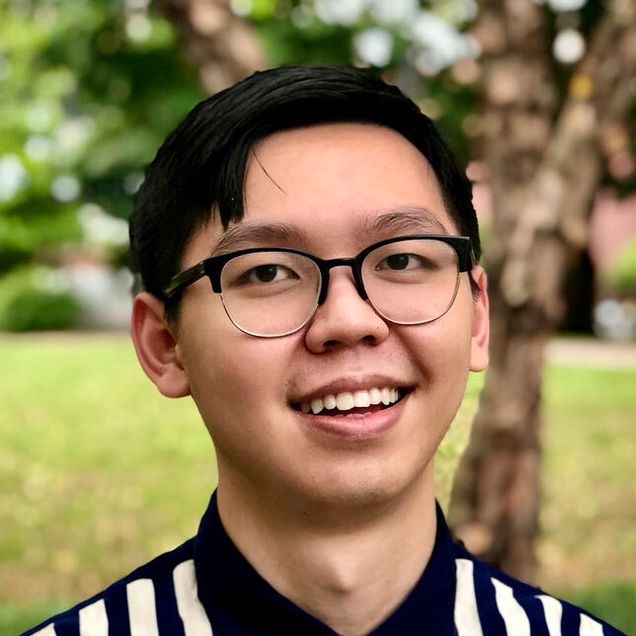Beyond Suicide Risk Self-Screening
Professors Amelia Stanton and Qimin Liu hope to better identify—and ultimately address—increased suicidal ideation for sexual and gender minorities.
Professors Amelia Stanton and Qimin Liu hope to better identify—and ultimately address—increased suicidal ideation for sexual and gender minorities.
Anyone who’s visited a primary care doctor in the US, even for an annual check-up, is probably familiar with a depression questionnaire that asks about suicidal ideation or self-harm.
But despite the widespread use of these screenings, many patients at risk for suicide fall through the cracks of the primary care system.

“It’s scary for a private practice primary care [doctor] to open that can of worms, and there’s a lot of fear around the very-much-unproven thought that talking about suicide leads to suicide,” says Amelia Stanton, an assistant professor in the Department of Psychological & Brain Sciences.
This issue is especially acute for members of sexual and gender minority groups, who are far more likely than their cisgender and heterosexual peers to consider or attempt suicide.
It’s for these reasons that Stanton and Boston University colleague Qimin Liu are embarking on a new research project. Their aim is to better understand the risk factors that increase suicidal ideation within the LGBTQ+ community, with the ultimate goal of informing new interventions to enhance suicide assessment at the level of primary care.

“We already have a disparity in [sexual and gender minority groups], they’re much more likely to have suicidal thinking or to complete suicide. So who within that subgroup is most at risk?” Stanton says.
To find out, Stanton and Liu, an assistant professor of psychological and brain sciences, are partnering with Fenway Health, a Boston community health center that specializes in care for LGBTQ+ individuals. The research pair will analyze medical records from a sample of about 1,500 patients and parse factors such as age, gender identity, income level, substance use, and race or ethnicity. The data analysis, using a method known as conditional inference trees, will identify which combinations of factors are associated with increased risk for suicidal ideation.
Based on these initial findings, the second phase of the research will involve qualitative interviews with patients—LGBTQ+ youth and young adults—who are at high risk for suicidal thoughts and behaviors. There will also be a focus group of health care providers aimed at understanding their experiences talking to patients about suicide, and what tools might be the most helpful for providers to make suicide prevention easier.
The scope of Stanton and Liu’s current research project is limited to the data analysis and qualitative interviews, but Stanton imagines follow-on work that could help build new screening tools for primary care doctors.
In this future, electronic medical records might prompt a doctor when a patient displays high risk factors for suicidal ideation, and provide sample language that a doctor can use to start a conversation, Stanton says. The idea would be to make it easier for physicians who don’t have specialized training in psychology to intervene and connect a patient with a behavioral health provider who does.
“We hope that once we’ve done this and have those groups identified, this can be more of an implementation-focused project,” Stanton says. A practice like Fenway Health would be an ideal place to test out some of these interventions, but Stanton also sees potential to implement these ideas at bigger health systems.
This isn’t the first time the professors’ research has focused on the LGBTQ+ community. Stanton has published previous papers about mental health for transgender and gender diverse individuals, and about substance use for HIV-positive men. Liu, meanwhile, recently published research about mental health for sexual and gender minority parents and their children.

Their current project, which will likely kick off in November and run for two years, is being funded with a grant from the American Foundation for Suicide Prevention. The symbolism of this is not lost on Stanton. “It’s a tough time for research. It’s an even tougher time for sexual and gender minority health research. And for foundations like this to say, ‘Yeah, this is really important,’ sends an important message to people who are struggling with suicidal ideation,” she says.
Liu also sees the political relevance of the project. “In the current climate, this is even more important,” he says, noting that the Trump administration closed down a national LGBTQ+ youth suicide hotline this year.
Stanton’s own work involves a longstanding focus on trauma, which is what put her on the path to psychology in the first place. She traces her interest in the topic back to the September 11 terrorist attacks, which she experienced as a child growing up in New York City.
“A lot of my friends and family members were impacted. And it really kind of got me thinking about trauma, and the impact of trauma on lives, and stories of trauma, and how traumatic narratives play out, how difficult it is to make sense of trauma,” Stanton says.
She channeled that fascination into a comparative literature major as an undergraduate. But she eventually decided to study the psychological impacts of trauma, rather than the literature of trauma, and pursued clinical work instead. Her graduate studies focused on sexual health and on the physiological impacts of sexual trauma. Then, during a clinical internship at Mass General Brigham, she spent time working in the gender identity clinic, and got involved with Fenway Health. This clinical work with sexual and gender minority groups helped her learn about the prevalence of suicidal ideation in the community.
It wasn’t until Stanton and Liu met recently that they considered addressing the issue in a more data-driven way. Liu’s expertise is in quantitative psychology, where he is focused on developing and applying novel statistical methods that can improve understanding of health inequity that sexual and gender minority groups face.
The pair hopes to continue their work well beyond this one project, as both are interested in moving toward the kind of clinical interventions that can improve the lives of LGBTQ+ people.